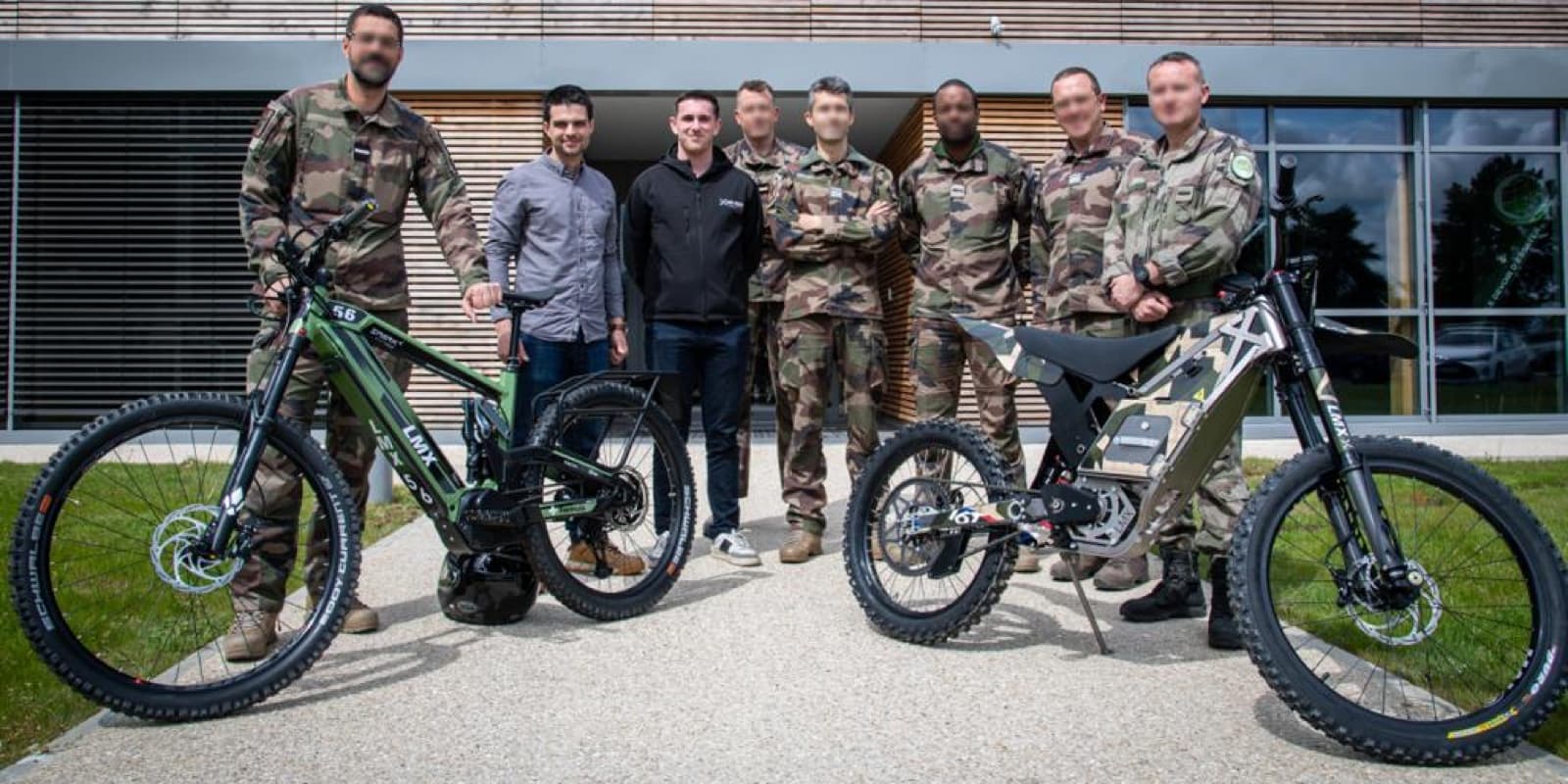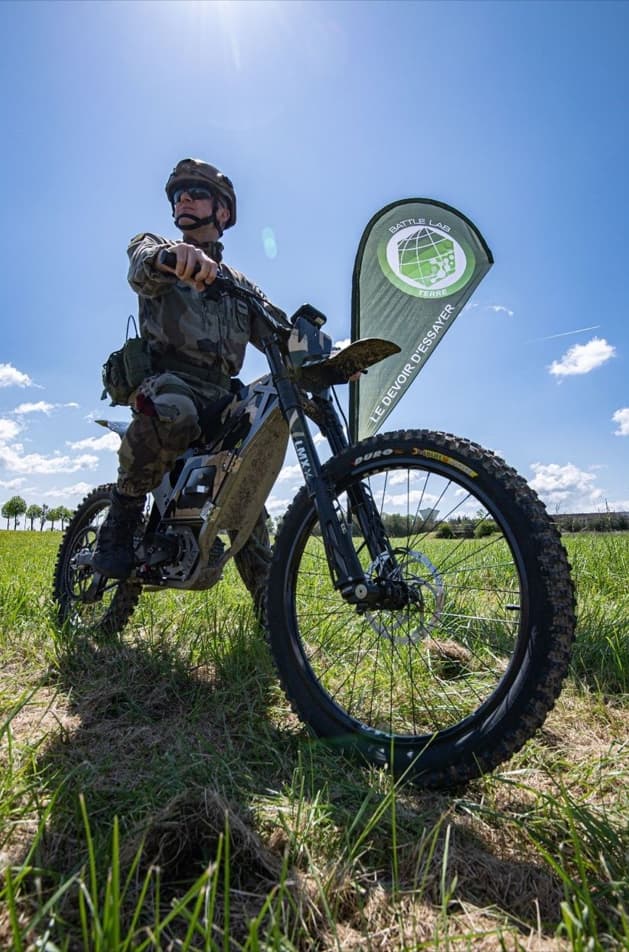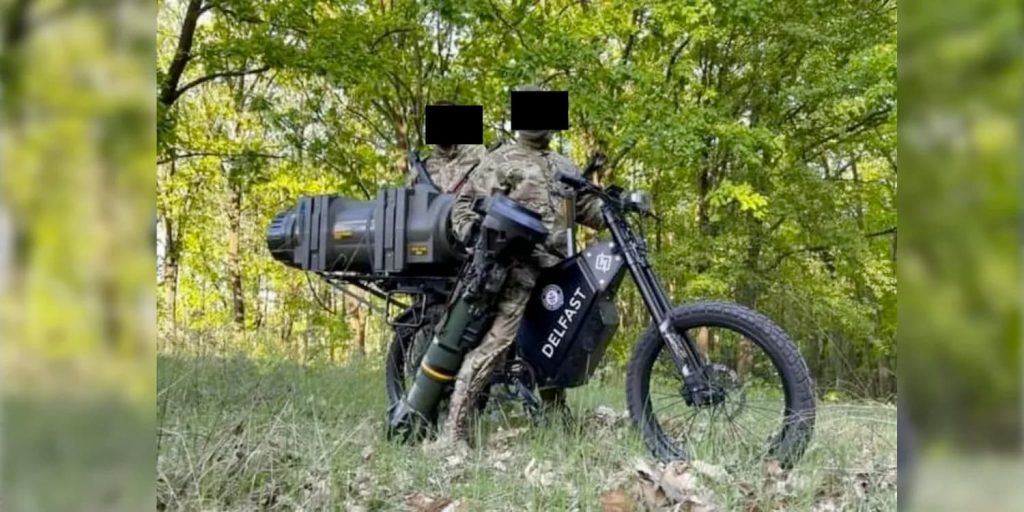
Electric bikes are no stranger to armed forces around the world, and now the French military has joined the ranks of e-bike riders as it wraps up the first phase of testing on electric two-wheelers.
The Battle Lab Terre innovation group in the technical section of the French ground forces, which is supported by the mobility and land space planning group (MOB-AGESTER), recently announced the completion of the first phase of e-bike testing.
As part of the evaluation, the French military used two models produced by the French high-performance e-bike company LMX Bikes.

The first model, an LMX 56, is a type of e-bike commonly referred to as a speed pedelec in France, similar to class 3 e-bikes in the US that can reach 28 mph (45 km/h). The second model tested by the military was a light electric motorcycle known as the LMX 161. That bike can reach speeds of up to 50 mph (80 km/h) despite weighing just 99 lbs (45 kg).
As the Section technique de l’armée de Terre (STAT) explained:
“This experiment, which will be further developed in 2024, should confirm the prospects for the use of these vehicles within the units, with regard to the evaluation of their performance (speed, autonomy, discretion, etc.) for defined missions (transmission of information, delivery of equipment, infiltration/exfiltration, etc.).”

We’ve followed LMX for years, watching as they rollout new e-bike models that seem to harness some of the light electric motorcycle spirit as well as new light e-moto models that appear to be as easy to ride as an e-bike. The company recently expanded operations in the US and Canada with a new importer, DIAN Motors, bringing their powerful e-bikes and lightweight e-motos to North America.
Such hybrid-style e-bikes can be ideal for military applications that require fast, agile machines that are lightweight and flexible for a variety of roles. Motorcycles have long been used in military applications, but their traditionally loud combustion engines often limit them to support roles. With electric bikes and motorcycles, we’ve seen many more instances of militaries around the world evaluating the silent machines for more tactical use cases.
Last summer we learned about British armed forces evaluating and considering Ukraine’s use of light electric motorcycles in its war with Russia, where e-bikes have proven useful for getting sniper teams into position as well as hauling anti-tank rockets.

Back in 2018 we learned that Norway’s armed forces were testing fat-tire electric bicycles in their own border guard patrols.
Patrol duties on e-bikes were also evaluated by the New Zealand Defense Forces in 2020 when they began trialing UBCO’s electric utility bikes.
Australian soldiers have trialed stealth electric bikes since 2021, and we also saw the first application of helicopter-mounted electric motorcycles during that same year in an application designed for quick insertion of special operators on low-signature electric dirt bikes.
Multiple special forces units in Europe and the Middle East have also tested high-power electric mountain bikes for field use, with paratroopers even air-dropping electric dirt bikes onto the battlefield.
Closer to home, the US military has tested electric mopeds built in North Carolina by Huck Cycles for tactical use.
I even used an e-bike during my own military service, discovering first hand how important it is to keep that AR barrel out of the spokes!
FTC: We use income earning auto affiliate links. More.











